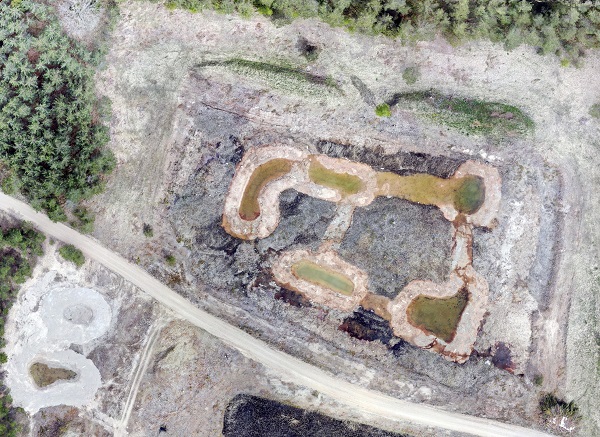LVM Creates a Habitat for the Natterjack Toad
In the autumn – winter season of 2021–2022, JSC “Latvia's State Forests” (LVM) created a habitat for the natterjack toad Epidalea calamita in the region of Northern Kurzeme, in the vicinity of Puze. In the area of the abandoned, partially overgrown quarry, trees and bushes were removed, shallow ponds were created for spawning of natterjack toads, and hiding places were made near them.
When surveying the territory of LVM in the vicinity of Puze in the Northern Kurzeme region in 2020, it was found that the population of natterjack toads in the vicinity of Puze is mainly threatened by the overgrowth of suitable habitats. The existing nature reserve “Puze Natterjack Toad Deposit” is no longer suitable for natterjack toad spawning; suitable conditions have been preserved only in a couple of quarries in the vicinity, which have not yet become overgrown.
“Natterjack toads choose shallow, periodically drying mudflats with a sandy or gravel bed on the seacoast or in quarries as spawning grounds. In suitable areas, natterjack toads quickly establish and multiply rapidly, but when the environment changes after a few years, for example overgrows with higher or denser vegetation, the species disappears, and new populations appear where the conditions are better. Therefore, extinction and the formation of new local populations should be considered a natural part of the dynamics of the species. Research shows that natterjack toads can move as far as 4–5 km in search of new places to live. The nearest known natterjack toad spawning sites, where natterjack toads have been found in recent years, are 0.5–1 km away from the restored habitat,” says LVM Environmental Planning Specialist Mārtiņš Kalniņš.
Since 2020, LVM has been conducting natterjack toad research in several quarries around Puze to assess the effectiveness of the management measures implemented and planned in the future.



